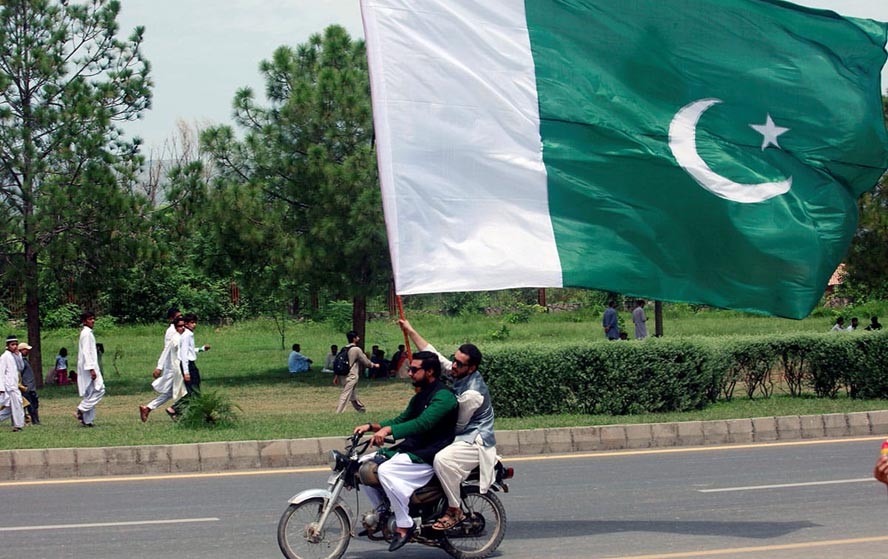
Building Baloch stakes in the state appears to be the only surest path to the ethnicity’s sense of belonging to the federation

In one’s interaction with a multitude of ethnic groups, Punjabi ethnicity is the most intensely imbued with Pakistani nationalism. On the other hand, Baloch ethnicity is probably least identified with Pakistani nationalism. This begs the question if one’s ethnicity has got anything to do with patriotism. I have yet to find any studies linking patriotism with ethnicity, race and colour. If the whole idea of an ethnicity’s association with patriotism is absurd -- which it is -- then what else may determine an ethnicity’s connection with patriotism.
I suppose it is the idea of state as a business enterprise that helps us understand why some people appear to be more patriotic than others. Punjabi ethnicity has the largest stakes in Pakistan both at the state and society levels. At the state level, 75 per cent of army comes from three districts -- Rawalpindi, Jhelum and Attock -- in Punjab and two districts -- Kohat and Mardan -- in Khyber Pakhtunkhwa, as per the findings of Stephen Cohen in his book titled The idea of Pakistan published in 2004.
Similarly, according to the website of Federal Public Service Commission, provincial quota for recruitment into federal services is as follow: Punjab 50 per cent, Sindh 19 per cent, Khyber Pakhtunkhwa 11.5 per cent, merit 7.5 per cent and Balochistan 6 per cent. Politically, out of a total of 270 Members of National Assembly (MNA), Punjab has 147 members followed by Sindh (61), Khyber Pakhtunkhwa (35), Balochistan (14), FATA (11) and federal territory (2). In terms of economy, agriculture and industries and infrastructure, Punjab is the most developed of all provinces.
Punjab gets lion’s share in National Finance Commission (NFC) award. NFC is tasked with the question as how to distribute revenues from federal divisible pool of taxes. Under the current formula, provincial population has 82 per cent weightage followed by 10.3 per cent to poverty, 2.5 per cent to revenue collection and 2.7 per cent to area. Nevertheless, this should never suggest that all Punjabis are satisfied with what they have in Pakistan. In Punjab, especially Lahore city, there is a fringe group which challenges the logic of partition and seeks affinity with Indian Punjab. For these people, identification with kinsmen is a greater good than a predominant position in Pakistani federation.
Of the four major ethnicities, Baloch have the smallest stakes in Pakistani federation. Five secessionist episodes in the Baloch history since 1947 probably demonstrate that the ethnicity is the least satisfied in Pakistan. In September 2007, according to an Inter Services Public Relation’s presentation titled "Information Brief," by 2001, Baloch representation in army was nil. It increased to 3.20 per cent by 2007 with the ethnicity’s representation in army expected to reach 4.0 per cent by 2011.
One may argue that since Balochistan is home to five per cent of population, its six per cent quota in FBSC’s jobs and four per cent quota in army suffice for the ethnicity’s integration in Pakistan. There are a number of problems with this argument. For one, it is only since December 3, 2009 that Balochistan’s quota in federal services was increased from 3.5 per cent to 6 per cent.
Similarly, it was only 2001 onwards that Baloch recruitment into army started from zero per cent. According to the 1998 census report, Balochistan was 5 per cent of Pakistan in terms of population but it was accorded just 3.5 per cent quota in federal jobs. Secondly, Baloch youth do not exclusively get benefited from the allotted quoted. As per 1998 census, the Baloch comprises only 54.8 per cent of Balochistan’s population that also consists of 29.6 per cent Pashtuns, 5.6 per cent Sindhis, 2.5 per cent Punjabis, 2.4 Seraikis, 1.0 Urdu speakers and 4.1 others that also includes the Darri-speaking Hazara ethnicity. Thirdly, there are strong accusations that candidates from Punjab contest on Balochistan quota in recruitment into federal services.
What have been the net effects of federal government’s promising initiatives on Baloch secessionist movement and whether they have any bearing on the surrender of dozens of separatist commanders need serious research work. Nevertheless, the government should undertake the following steps to further the goal of integrating Baloch youth at the state level.
First, the government should increase Balochistan’s quota in all federal services including army, navy and air force and intelligence agencies in a way that five per cent quota is exclusively reserved for Baloch youth who are the residents of Balochistan. The arrangement should remain in place at least for a decade.
Second, Baloch interests should be secured in China-Pakistan Economic Corridor (CPEC) project. This should be done in consultation with Baloch leadership. In the final analysis, what conspire against the gains made under these initiatives are the accusations of mutilated bodies of suspected militants in operations by Law Enforcement Agencies (LEAs).
How the Baloch respond to state’s policies depends upon the policy that the central government metes out towards them. Building Baloch stakes in the state appears to be the only surest path to the ethnicity’s sense of belonging to Pakistani federation. This is also a great lesson from the history of Pashtun nationalist movement informed by secessionist tendencies. Will policy makers listen to reason?